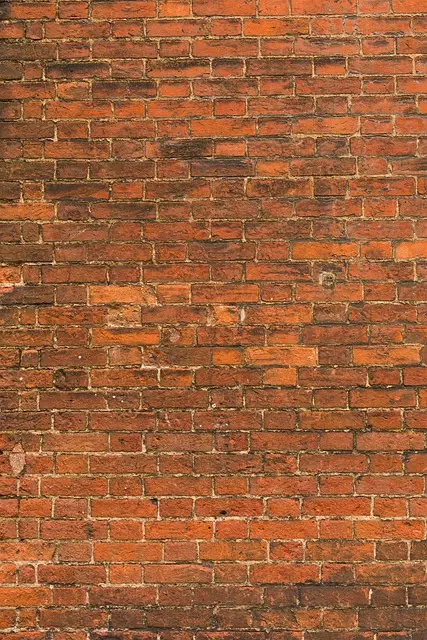Grout lines, often overlooked, can become breeding grounds for stains. This text explores causes, ranging from spills to mold and wear, emphasizing diverse stain types. Proper preparation, including debris removal and testing solutions, is vital. Chemical or natural cleaners, like baking soda and vinegar, offer effective yet safe stain removal. Understanding stain types guides cleaning methods: stiff brushes for general discolouration, specialized tools for stubborn stains. Regular maintenance, sealing, and thorough cleaning prevent future issues. Avoid abrasive cleaners and pre-soak grout lines for better results.
Grout lines, those intricate pathways between tiles, can become marred by deep, stubborn stains over time. Whether from mold, mildew, hard water deposits, or ink leaks, removing these stains isn’t always easy. This guide delves into effective strategies for tackling deep grout stains, ranging from chemical solutions and natural remedies to scrubbing techniques and maintenance tips. Learn how to restore your grout lines to their original brilliance and prevent future stains from taking hold.
Understanding Grout Stains: Causes and Types

Grout lines, often overlooked, can become a haven for stains due to their porous nature and tendency to trap moisture and dirt. Understanding the causes and types of grout stains is the first step in effectively removing them. Common causes include spilled liquids, food debris, mold growth, and general wear and tear over time. These stains can range from surface-level discolorations to deeper penetrations that require more aggressive cleaning methods.
There are various types of grout stains, each demanding a tailored approach for removal. Surface stains, often visible as discolored patches or lines, may be caused by everyday spills. More stubborn stains could be due to mineral deposits or mold buildup, requiring specific cleaning solutions and techniques to Remove Stains from Grout Lines successfully.
Preparation: Cleaning and Safety Measures

Before tackling any stain removal project, proper preparation is key to achieving optimal results and ensuring safety. When it comes to removing deep stains from grout lines, the process begins with a thorough cleaning of the affected areas. Start by sweeping or vacuuming the floor to eliminate loose debris and dust. Then, use a mild detergent and warm water solution to gently clean the grout lines. This initial step helps in softening and lifting any surface stains.
Safety measures are also crucial during this phase. Put on protective gloves and goggles to shield yourself from potential irritants or chemicals. Ensure proper ventilation in the area to avoid inhaling harmful fumes, especially if using stronger cleaning agents. Always follow product instructions and consider testing a small, inconspicuous area first before applying any stain removal solution to ensure it doesn’t cause damage or discoloration.
Chemical Solutions for Effective Stain Removal

Removing stains from grout lines can be a challenging task, but chemical solutions offer an effective approach. These specialized products are designed to penetrate and lift even the deepest of stains, ensuring a thorough clean. Common culprits like mold, mildew, and hard water deposits can be stubborn guests in your tile and grout, but the right chemical treatment can banish them for good.
When selecting a chemical solution, consider options that are safe for both your grout and the surrounding surfaces. Many modern products are formulated to be gentle yet powerful, utilizing enzymes or acidic blends to dissolve stains without damaging materials. Always follow the manufacturer’s instructions for application and safety precautions, ensuring you choose a product tailored to your specific stain removal needs.
Natural Remedies for Mild Stains

Mild grout stains can often be treated effectively with natural remedies at home, providing an eco-friendly and cost-effective solution for removing marks between tiles. Baking soda is a popular choice; its mild abrasive properties make it ideal for scrubbing away surface stains. Combining baking soda with vinegar or lemon juice creates a powerful cleaning agent that cuts through grease and grime while also neutralizing odors. This simple paste can be applied directly to the grout lines and left to sit for a short period before being brushed away, revealing cleaner, brighter grout.
Another natural remedy involves using hydrogen peroxide, which acts as a mild bleach, effectively lightening discolored grout. Applying a solution of equal parts hydrogen peroxide and water to the affected area, letting it soak, and then scrubbing with a soft-bristled brush can significantly improve the appearance of older, stained grout lines. These methods offer gentle yet effective ways to Remove Stains from Grout Lines without resorting to harsh chemicals, ensuring your space remains fresh and clean while preserving the longevity of your grout.
Scrubbing Techniques to Restore Grout Lines

Removing stains from grout lines requires a combination of the right tools and effective scrubbing techniques. Start by identifying the type of stain present, as this will dictate your approach. For general discolourations, a stiff-bristled brush and a cleaning solution of warm water and mild detergent are often sufficient. Gently scrub the affected areas in a back-and-forth motion, ensuring you reach deeply into the grout lines.
For more stubborn stains, consider using specialized grout cleaners or baking soda paste. Apply the cleaner or paste to the stain, let it sit for several minutes to dissolve or loosen the debris, then scrub vigorously with a clean brush or sponge. Be sure to rinse thoroughly with warm water afterward to eliminate any residue.
Maintenance: Preventing Future Stains

Regular maintenance is key to preventing future grout stain removal issues. Keeping your grout lines clean and free from debris is an effective way to deter staining. Sweep or vacuum the floor regularly, focusing on the grout areas, to remove any dirt or dust accumulated between tiles. This simple step can significantly reduce the chances of stains forming.
Additionally, sealing the grout with a high-quality sealer after cleaning ensures that the grout lines remain protected from moisture and stains. Sealing provides a barrier, making it easier to clean and preventing new stains from adhering to the grout. Remember, regular cleaning and sealing will not only maintain the aesthetic appeal of your tiled surfaces but also make stain removal from grout lines much simpler in the long run.
Common Mistakes to Avoid During the Cleaning Process

When tackling deep stain removal from grout lines, it’s essential to be aware of common mistakes that can hinder your cleaning efforts. One of the most frequent blunders is using abrasive cleaners or tools, which can damage the grout and surrounding tile. Abrasive materials can scratch the surface, making the stains more noticeable in the long run. Instead, opt for non-abrasive, mild cleaning agents designed specifically for grout to avoid this pitfall.
Another mistake to steer clear of is skipping the pre-soaking step. Grout lines often trap dirt and stains, so allowing your cleaning solution to saturate the area thoroughly is crucial. Neglecting this step could result in less effective stain removal, leaving behind residual marks. Always give the grout a good soak before applying any cleaner for optimal results when removing stains from grout lines.



